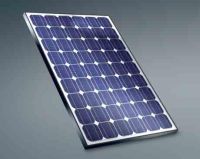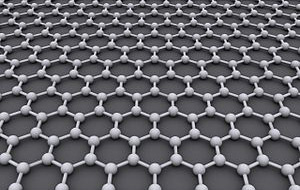Displaying items by tag: Graphene
Incredibly fast graphene chips from IBM
IBM's Research Laboratory achieved a great progress in the development of graphene microchip. Their engineers have managed to create an integrated chip of graphene instead of silicon, which shows several times better performance than all previous graphene chips. This big jump occurred because of the discovery of methods of depositing graphene on a substrate, which is stacked in a way that integrated circuits are not damaged, which was not possible until now.
New Developments Move Graphene Closer To Our CPUs
 |
In a paper titled “Graphene-Based Non-Boolean Logic Circuits” a group of researchers from University of California Riverside explain how certain limitations with graphene could be overcome in the near future. Graphene, for those of you that might not be familiar, is one potential replacement material for processors. This is not just CPUs, but could include a large array of electronic components. However, there has been a problem with graphene that no one has been able to completely overcome. Due to some of the physical and electrical properties of graphene (one atom thick, high electron mobility) graphene has been seen as a solid replacement for the material used to build integrated circuits. However, those same properties make it very inefficient for building traditional transistors.
Intel rushes to 14 nm processors
 |
Intel plans to use 14-nanometer technology in conjunction with the next generation of processors codenamed Broadwell, heirs of the 22-nanometer Haswell which is expected next year. Intel's chief for technology development, Justin Rattner, said that the development of new production technology is progressing according to the plan and that Intel is expected to use this within one to two years. He emphasized that Intel's aggressive development of new production technologies will allow an extension of Moore’s law for the next 10 years. Moore's Law says that the number of transistors and the density of transistors on chips doubles every two years.
Stanford scientist develop solar cells made completely of carbon
 |
Once again it comes to carbon nanotubes and this time we find it combined with graphene [something we expect to see in CPUs soon –Ed]. Scientists have created a solar cell designed like sandwich in which the electrodes are made of graphene (a special honeycomb structure of carbon atoms just one atom thick) and carbon nanotubes. Between the electrodes there is special photoactive layer. This photoactive layer is composed of carbon molecules one nanometer in diameter. Otherwise, these molecules form a soccer ball called "buckyballs." The end result is that the whole solar cell made from carbon.
New Material Found That Could Revolutionize The Way CPUs and Other Computer Components Are Made
 |
As companies race towards smaller and faster processors they continually run into a problem. This problem is one of current leakage. As the process used to make the individual transistors shrinks current leakage grows. There have been many concepts presented to combat this leakage some of which have been successful such as AMD’s SOI (Silicon on Insulator), Intel’s High-K Metal Gate and Tri-Gate Transistors. These work fairly well down to 28nm, but start to become less efficient at 22nm and below. Most agree that to move forward with smaller transistors a new material is needed.
One More Hurdle Passed In The Race To Using Graphene In Processors.
 Two more pieces of the puzzle are falling into place with the move away from silicon in microprocessors. Silicon has been the mainstay for creating processors for… well for a very long time. However, it has its limitations as the need to make the transistors smaller continues to increase. Even if you are not a believer in More’s Law you still cannot get around the fact that processors (GPU CPU and “other”) are all growing more complex. This means that the number of components continues to grow and we are faced with a couple of choices; either die in the vacuum of space or… no wait that is someone else. The choices are actually very clear; make the processor dies larger and larger or shrink the manufacturing process.
Two more pieces of the puzzle are falling into place with the move away from silicon in microprocessors. Silicon has been the mainstay for creating processors for… well for a very long time. However, it has its limitations as the need to make the transistors smaller continues to increase. Even if you are not a believer in More’s Law you still cannot get around the fact that processors (GPU CPU and “other”) are all growing more complex. This means that the number of components continues to grow and we are faced with a couple of choices; either die in the vacuum of space or… no wait that is someone else. The choices are actually very clear; make the processor dies larger and larger or shrink the manufacturing process.
Intel Already Working on 14nm Process; How Will They Deal With Leakage?
 Intel is looking to the future even as their newest CPU, the 22nm Ivy Bridge, is taking something of a beating in the media. According to a few slides that have hit daylight Intel is already working on moving some of its FABs to 14nm in preparation for their next generation of CPUs. Of course this is not that big of a deal really, Intel has moved from one process to the next like clockwork (insert “Tick-Tock” joke here).
Intel is looking to the future even as their newest CPU, the 22nm Ivy Bridge, is taking something of a beating in the media. According to a few slides that have hit daylight Intel is already working on moving some of its FABs to 14nm in preparation for their next generation of CPUs. Of course this is not that big of a deal really, Intel has moved from one process to the next like clockwork (insert “Tick-Tock” joke here).
